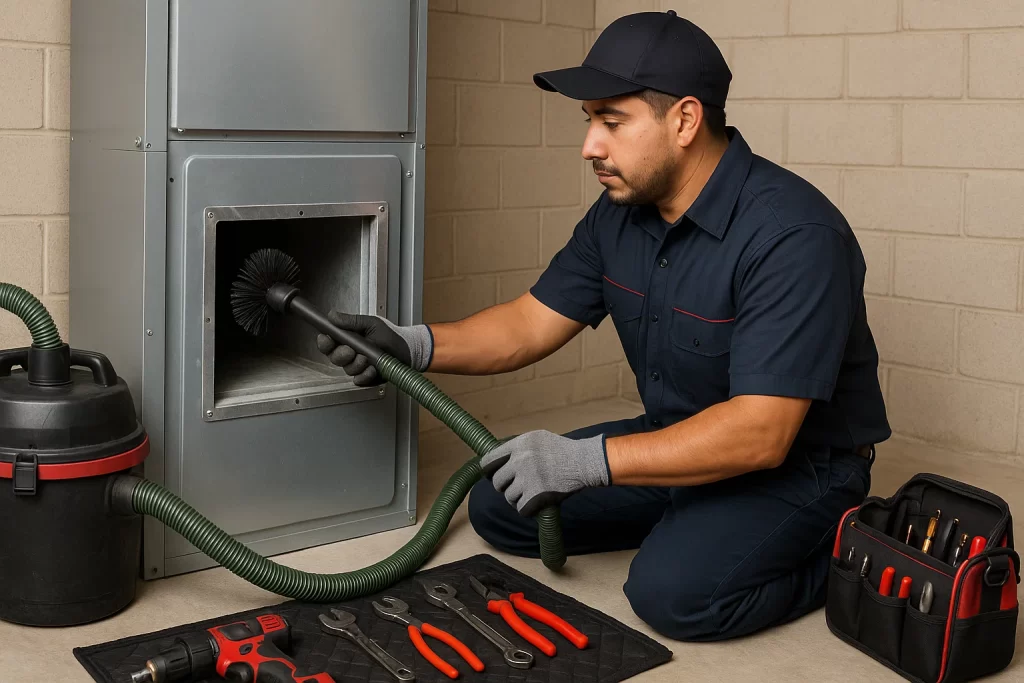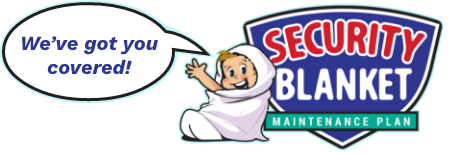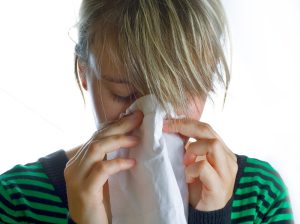When was the last time you thought about your home’s ductwork? If you’re like most homeowners, it’s probably not often. But hidden in your HVAC ducts could be dust, mold spores, pet dander, and other airborne contaminants, common indoor air pollutants from various indoor air sources and indoor sources within the indoor environment, that affect your indoor air quality (IAQ). Indoor air quality (IAQ) refers to the condition of air inside buildings and its impact on human health, comfort, and well-being. Indoor air quality (IAQ) is critical to the health of families. Pollutants indoors, such as chemical pollutants and biological contaminants, can accumulate and significantly affect indoor air quality, leading to health hazards and associated health risks. The health risk from exposure to indoor pollution depends on average pollutant concentrations, the type of pollutants, and individual sensitivity, with some pollutants linked to serious conditions like lung cancer and respiratory health problems. The health effects of indoor air pollutants depends on factors such as the duration of exposure, individual sensitivity, age, preexisting health conditions, and the average pollutant concentrations found in indoor spaces. Health problems can emerge immediately or years after exposure, and may be caused by either average pollutant concentrations or short-term spikes.
Outdoor air quality and outdoor air flows also influence indoor air quality, as outdoor air enters the home through ventilation, infiltration, and open windows. Outdoor air coming indoors can bring outdoor air pollutants such as ozone and particulate matter into indoor spaces, impacting overall air quality. Ensuring enough fresh air and proper air movement, driven by air temperature differences, helps dilute indoor pollutants. Too little outdoor air or not enough outdoor air can increase indoor pollutant levels, leading to indoor air quality problems. Low infiltration and poor ventilation can result in high and pollutant levels inside the building. The outdoor ventilation rate, or the amount of outdoor air introduced into a building, is essential for maintaining healthy indoor environments and preventing the buildup of pollutants.
Mechanical ventilation devices, air handling systems, bathroom exhaust fans, and cooling systems all play a role in maintaining good air quality by continuously or intermittently remove air and distributing filtered, conditioned outdoor air. These systems help maintain healthy indoor pollutant levels and prevent the accumulation of contaminants in indoor spaces.
Using an air cleaner and other strategies for improving indoor air quality, along with identifying indoor air sources, are important steps to reduce exposure and protect human health. Combustion appliances, such as an improperly adjusted gas stove or malfunctioning natural gas heater, can produce significantly more carbon monoxide, increasing health hazards indoors. Heating systems, especially those that burn fossil fuels like wood, oil, or natural gas, are also major contributors to indoor air quality problems due to their emissions. Both the World Health Organization and the American Lung Association provide authoritative guidance on indoor air quality and its impact on health. The World Health Organization estimates that poor indoor air quality resulted in the loss of millions of healthy life years.
Addressing indoor air quality problems in various indoor spaces requires ensuring enough outdoor air and proper ventilation to dilute pollutants and maintain a healthy environment.Regular duct cleaning in Milton, WI can make a major difference in both your health and the efficiency of your HVAC system.

Introduction to Indoor Air
Indoor air is the air that fills our homes, offices, other indoor environments, and indoor spaces, and its quality plays a vital role in our daily health and comfort. While many people are concerned about outdoor air pollution, indoor air pollution can be just as significant, if not more so. According to the U.S. Environmental Protection Agency (EPA), most people spend about 90% of their time indoors, where indoor air pollutants can accumulate to levels two to five times higher than those found outdoors. Indoor pollution is a major health hazard especially in developing countries due to cooking methods. Common sources of indoor air pollution include smoke, chemical vapors, mold, and emissions from paints, furnishings, and cleaning products. Poor air quality has also been linked to cognitive deficits and decreased productivity in workplaces and schools. Because we spend so much time inside, maintaining good air quality in our indoor environments is essential for protecting our health and well-being.
Causes of Poor Air Quality
Poor indoor air quality is often the result of a combination of indoor air pollutants that can originate from a variety of sources. Common culprits include secondhand smoke, combustion pollutants from improperly adjusted gas stoves or heating systems, radon, mold, allergens, and volatile organic compounds (VOCs) released by building materials and household products. Various types of heating systems, especially those that burn fossil fuels such as wood, oil, and natural gas, can contribute to indoor air quality problems by emitting pollutants like carbon monoxide and other contaminants, particularly if not properly maintained. Radon is a naturally occurring radioactive gas that is the second leading cause of lung cancer. The Wisconsin Department of Health Services recommends all homes be tested for radon. Carbon monoxide, a dangerous gas, can also be present in homes with inadequate ventilation or malfunctioning appliances. In addition, factors like high humidity, hotter temperatures, and insufficient air flow can increase indoor air pollution by allowing pollutants to build up. Understanding these sources is key to identifying and addressing the causes of poor indoor air quality problems in your home.
Air Pollution Sources
Air pollution sources play a major role in determining the quality of the air inside your home. These sources can be divided into two main categories: indoor and outdoor. Indoor sources include combustion appliances like gas stoves and fireplaces, building materials such as paints and adhesives, household products like air fresheners and cleaning agents, and biological contaminants such as mold and pet dander. For example, an improperly adjusted gas stove can release significantly more carbon monoxide, a dangerous pollutant that poses serious health hazards. Damp indoor environments can also encourage the growth of mold and mildew, which are known to trigger respiratory diseases and worsen poor indoor air quality.
Outdoor air pollution can also affect your indoor air, as pollutants from vehicle emissions, industrial activities, and even natural events like wildfires can enter your home through ventilation systems or open windows. Understanding these air pollution sources is crucial for improving indoor air quality. By identifying and addressing both indoor and outdoor sources of air pollutants, you can take meaningful steps to protect your indoor environment and reduce the risk of health problems associated with poor air quality.
Health Risks Associated with Poor Air Quality
Exposure to poor indoor air quality can have a wide range of health effects, especially for young children, older adults, and those with pre-existing respiratory diseases. Young children, older adults, and people with preexisting lung diseases are most at risk from poor indoor air quality. The severity and type of health effects from indoor air pollutants depends on factors such as exposure duration, individual sensitivity, and the specific pollutants present. Short-term symptoms of exposure to indoor air pollutants may include headaches, eye, nose, and throat irritation, coughing, painful breathing, bronchitis, and skin irritation. Over time, poor air quality can lead to more serious health problems, such as triggering asthma attacks, worsening emphysema, contributing to cardiovascular disease, and even increasing the risk of certain cancers. Some health effects from indoor air pollution occur only after years of exposure, making it difficult to link them directly to specific pollutants. Long-term exposure to indoor air pollutants can also affect the central nervous system, blood, spleen, liver, and reproductive system. Protecting your indoor air is crucial for reducing these health risks and maintaining overall well-being.
What Is Duct Cleaning?
Duct cleaning involves removing dust and debris from your home’s heating and cooling system ductwork. Over time, particles like pollen, pet hair, and household dust accumulate in the ducts. Professional technicians use specialized vacuums, brushes, and blowers to dislodge and extract the contaminants from your air ducts, supply registers, return vents, and sometimes even the HVAC system itself. This process helps ensure that only clean, filtered air is circulating throughout your home by working in conjunction with high-efficiency air filters and purifiers designed to maintain indoor air quality. Clean ducts also support a healthy air exchange rate and help your ventilation system continuously remove indoor air contaminants, improving overall indoor air quality.
How Long Does Duct Cleaning Take?
The time it takes depends on the size of your home, the number of vents, and the condition of your ductwork. Most residential duct cleanings take between 2 to 4 hours. Larger homes or homes with particularly dirty systems may take longer. Our technicians will give you a more accurate time estimate when they assess your system.
Will My House Be a Mess Afterwards?
This is one of the most common concerns homeowners have, and the answer is no. When done by trained professionals like the members of our team, duct cleaning is a clean, controlled process. High-efficiency vacuums and containment systems are used to prevent dust from escaping into your living spaces. We take care to cover floors and protect furniture in the work areas, leaving your home as clean as we found it, or cleaner.
Will There Be Debris Blowing Out of My Vents?
After a proper duct cleaning, there should be no visible debris blowing from your vents. If you’re currently noticing particles or dust being pushed out when your system runs, that’s a sign it’s time to book a professional duct cleaning service. This debris can be carrying indoor air pollutants into your living spaces, which can negatively impact your indoor air quality. Once complete, airflow will be cleaner, and your HVAC system may even run more efficiently due to the lack of buildup.
Can I Stay in My Home During the Cleaning?
Absolutely. Duct cleaning is safe to perform while you’re home. There’s no need to leave, though you may want to stay out of the immediate work areas for convenience. Our technicians work quickly and respectfully to minimize disruption. If you’re sensitive to dust or have allergies, you might choose to step outside briefly during the initial stages of cleaning, but this is not necessary for most people.
Duct Cleaning Frequency
How often you should clean your air ducts depends on several factors, including your HVAC system type, how often it’s used, and the overall air quality in your home. The National Air Duct Cleaners Association (NADCA) recommends having your air ducts professionally cleaned every 2 to 5 years, or more frequently if needed. The U.S. Environmental Protection Agency (EPA) suggests that duct cleaning is necessary when there is visible mold growth, signs of vermin, or excessive dust and debris. The most effective way to improve indoor air quality is to eliminate individual sources of pollution or to reduce their emissions. Regularly changing your air filters and cleaning vents can help improve indoor air quality and may reduce the frequency of professional duct cleaning. Staying on top of maintenance ensures your indoor air stays as clean and healthy as possible.
Air Filtration Systems and Purifiers
Air filtration systems and purifiers are powerful allies in the fight against indoor air pollutants. These devices are designed to improve indoor air quality by capturing and removing a wide range of air pollutants, from dust and pollen to volatile organic compounds and bacteria. HEPA filters, for instance, are highly effective at trapping tiny particles, making them ideal for households with allergy sufferers or pets. Activated carbon filters excel at removing odors and chemical pollutants, while UV light purifiers target airborne bacteria and viruses, helping to create a healthier indoor environment.
To get the most out of your air filtration system, regular maintenance is key. This includes changing filters as recommended and ensuring the system is operating efficiently. By investing in a quality air purifier or filtration system and keeping it well-maintained, you can significantly reduce indoor air pollutants and enjoy cleaner, fresher air throughout your home.
Regular Maintenance
Regular maintenance is essential for keeping your indoor air clean and healthy. This means more than just cleaning your air ducts, it also involves replacing air filters on schedule, inspecting your heating and cooling systems, and keeping an eye on potential sources of indoor air pollution. Dirty air ducts can harbor mold, bacteria, and other pollutants that circulate through your indoor environment, while clogged air filters can reduce air flow and allow pollutants to build up.
Don’t forget about your indoor plants, either. While they can help improve air quality, overwatering or neglect can lead to mold growth, which can trigger respiratory diseases. Regularly checking and maintaining your cooling systems, air ducts, and other components of your HVAC system can help you identify indoor air sources of pollution and address them before they become a problem. By staying proactive with maintenance, you can reduce indoor air pollution and create a safer, more comfortable home environment.
Air Quality Standards
Air quality standards provide important benchmarks for what constitutes safe and healthy indoor air. These guidelines, set by organizations like the Environmental Protection Agency (EPA) and the American Lung Association, specify the maximum allowable concentrations of various air pollutants in indoor environments. For example, the EPA recommends that indoor carbon monoxide levels should not exceed 9 parts per million (ppm) over an 8-hour period, while the American Lung Association advises that particulate matter should stay below 35 micrograms per cubic meter over 24 hours.
Meeting these air quality standards is crucial for reducing the health risks associated with poor indoor air quality. By monitoring your indoor air and taking steps to keep pollutant levels within recommended limits, you can help protect your family from the health risks posed by air pollutants, including carbon monoxide and other harmful substances. Staying informed about air quality standards and striving to meet them is a key part of maintaining a healthy indoor environment.
Why It Matters
Cleaner ducts mean cleaner air. If someone in your household suffers from allergies, asthma, other respiratory concerns, or wants to support better respiratory health, duct cleaning can significantly reduce airborne irritants. Even if you’re symptom-free, reducing dust buildup improves air quality, lowers HVAC wear and tear, and can even extend the life of your system. These benefits are even more pronounced when paired with routine whole-home HVAC ductwork services that keep your entire air distribution system in optimal condition. Volatile Organic Compounds (VOCs), which can cause headaches, eye, and throat irritation, are released from common materials like furniture and cleaning supplies, and reducing their presence can further enhance indoor air quality.
Duct cleaning is an important step in improving indoor air quality for your home. If you’re ready to breathe easier, reach out to our team today to schedule your professional duct cleaning. A cleaner, healthier home is just one appointment away.
Health Benefits of Good Air Quality
Maintaining good indoor air quality offers a wide range of health benefits for you and your family. By reducing exposure to indoor air pollutants, you can lower your risk of developing respiratory diseases, cardiovascular disease, and even lung cancer. Poor air quality has been linked to a variety of health problems, from headaches and fatigue to more serious conditions like asthma and heart disease. Improving indoor air quality can also enhance cognitive function, boost mood, and promote overall well-being.
The World Health Organization highlights that improving indoor air quality can prevent millions of deaths each year, underscoring the importance of taking action against both indoor and outdoor air pollution. By using air purifiers, increasing ventilation, and minimizing indoor air pollution sources, you can create a healthier indoor environment and reduce the health risks associated with poor air quality. Taking these steps not only protects your health but also contributes to a more comfortable and enjoyable home.
If you’re ready to breathe easier, reach out to our team today to schedule your professional duct cleaning. A cleaner, healthier home is just one appointment away.
You can always count on 24-Hour Home Comfort Services, your heating and cooling specialists.


